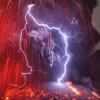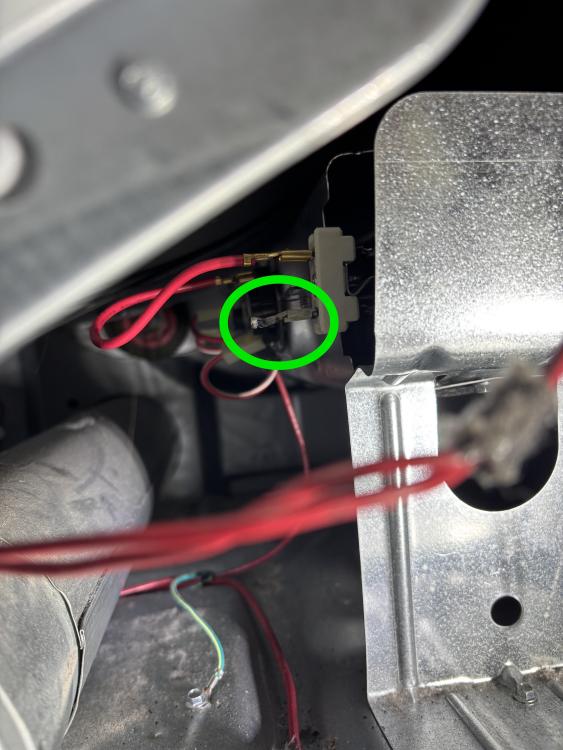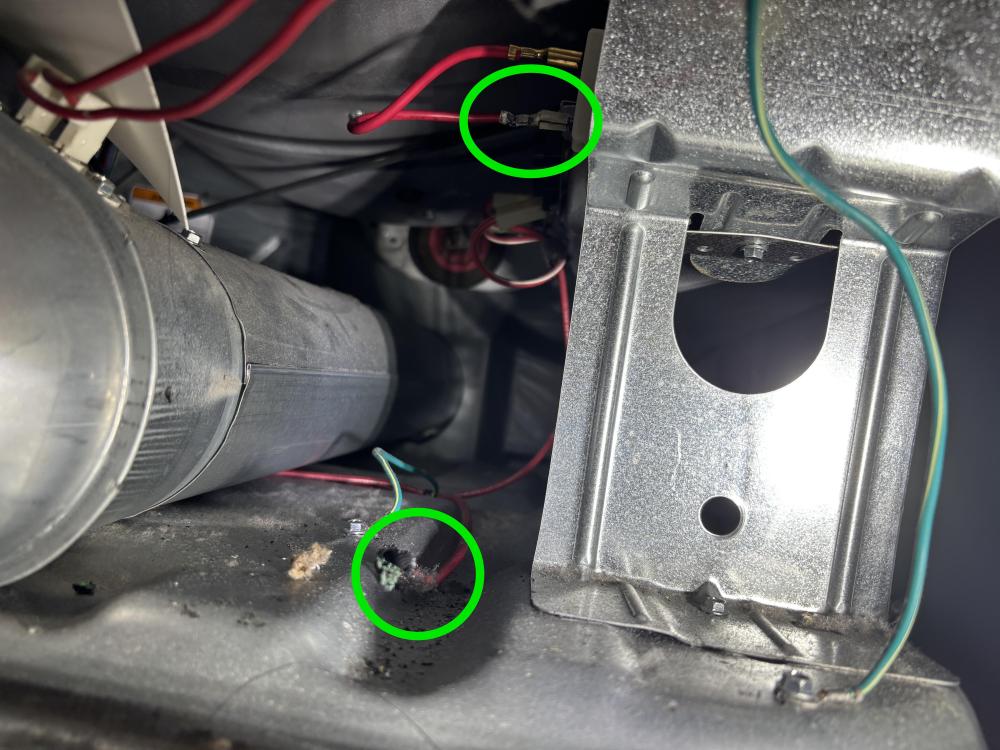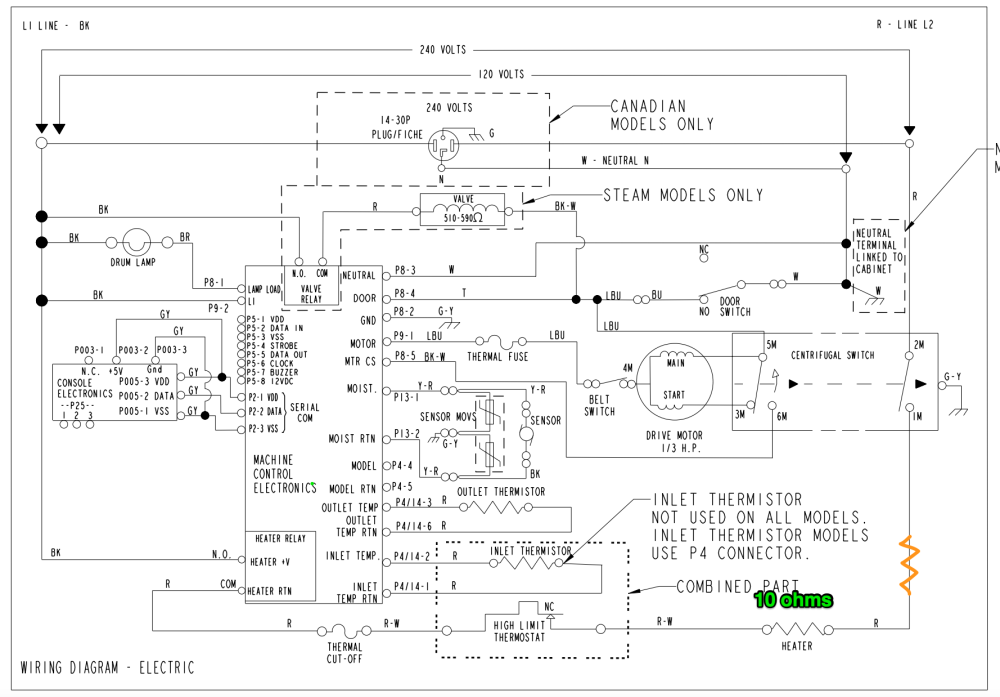Electric Dryer Keeps Burning Wires
I wanted to highlight a recent topic in the Appliantology forums because it showcases a few good teaching points -- and because it had some fun pictures.
Here's the initial setup that the OP gave in his post about an electric dryer:
QuoteSomeone change heater 4 weeks ago. When I went 2 weeks ago thermostat to heater wire was burnt. Motor to heater wire was good. I replaced burnt wire.
There's a very important tidbit in there: someone other than the tech did work on this previously. Maybe another tech, maybe the customer -- we don't know. We'll circle back to why that's so important.
The OP continued:
QuoteI tested heater for short and resistant. Don’t see any other issue. Now after two weeks get call back. I went back and saw now motor to heater wire is burnt.
So, over the course of 4 weeks, both wires to the heating element burnt up. What could be the cause?
Here are the fun pictures of the scenario, as promised. The burnt up wires are circled to make them easier to spot.
So, what would cause wires to just burn themselves up like this? Well, as some of the many astute techs here at Appliantology pointed out in that forum topic, this was certainly caused by loose connections. Seems that whoever replaced the heater beforehand didn't make sure everything was a tight fit.
But why would loose connections lead to burnt wires?
Loose connections add electrical resistance to the circuit. Effectively, it becomes a load in the circuit. To demonstrate this, here's the schematic for this dryer with the loose connection drawn in orange.
So the loose connection is a load in series with the heater. That means some of the circuit's voltage will be dropped across the loose connection rather than the heater. Voltage drop means that there will be some power output from this loose connection -- that's watts in the form of heat.
Just how many watts are we talking here? That depends on the resistance of the loose connection. Let's say it's 0.1 ohms -- a tenth of an ohm. Running some Ohm's law calculations for this 240 VAC circuit, that gives us 56 watts. That's a lot of heat for a section of wire! Just think of how hot a 60 watt incandescent light bulb can get -- and that's a load that's designed to shed as much wattage as possible as light instead of heat.
And if the resistance is higher -- even just 1 ohm? Now we're looking at 476 watts. That'll burn up a wire.
So, two takeaways here:
- If someone has worked on the appliance before you, check any part of the machine they could have possibly touched. Because once you make a repair, it's now your problem. The tech in our forum post could have avoided a callback if he had checked how tight the other wire on the heater was.
- Loose connections are bad news. They're unintended loads in series, and especially in high voltage circuits, they can get very hot very quickly.
Want to get in on the action? Join the Brotherhood of Techs at Appliantology.
- Appliantology.org is a cultivated, private community of techs.
- Get solid tech advice from working, professional techs and business owners.
- Avoid the endless noise and guesswork thrown at you from groups on social media.
- Download the service manuals, tech sheets, and service bulletins you need to git 'er done.
Join the Brethren in the Craft right now with our membership options at Appliantology and see how it can help you in your business starting today.
-
.png) 7
7
-
 2
2







3 Comments
Recommended Comments